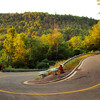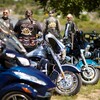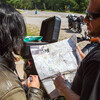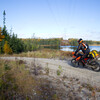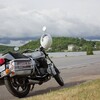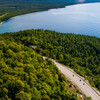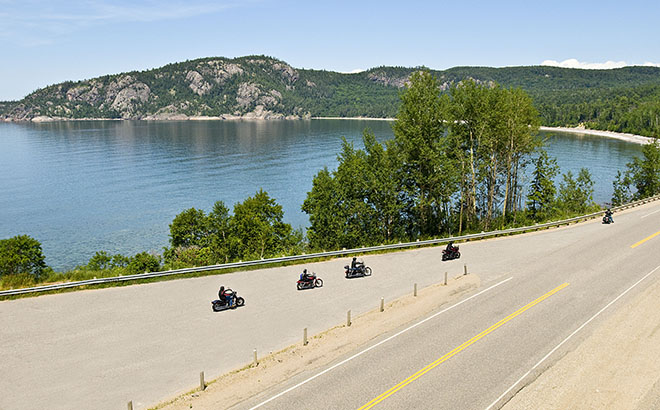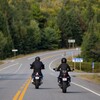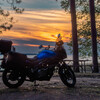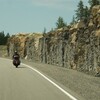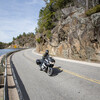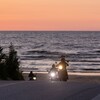
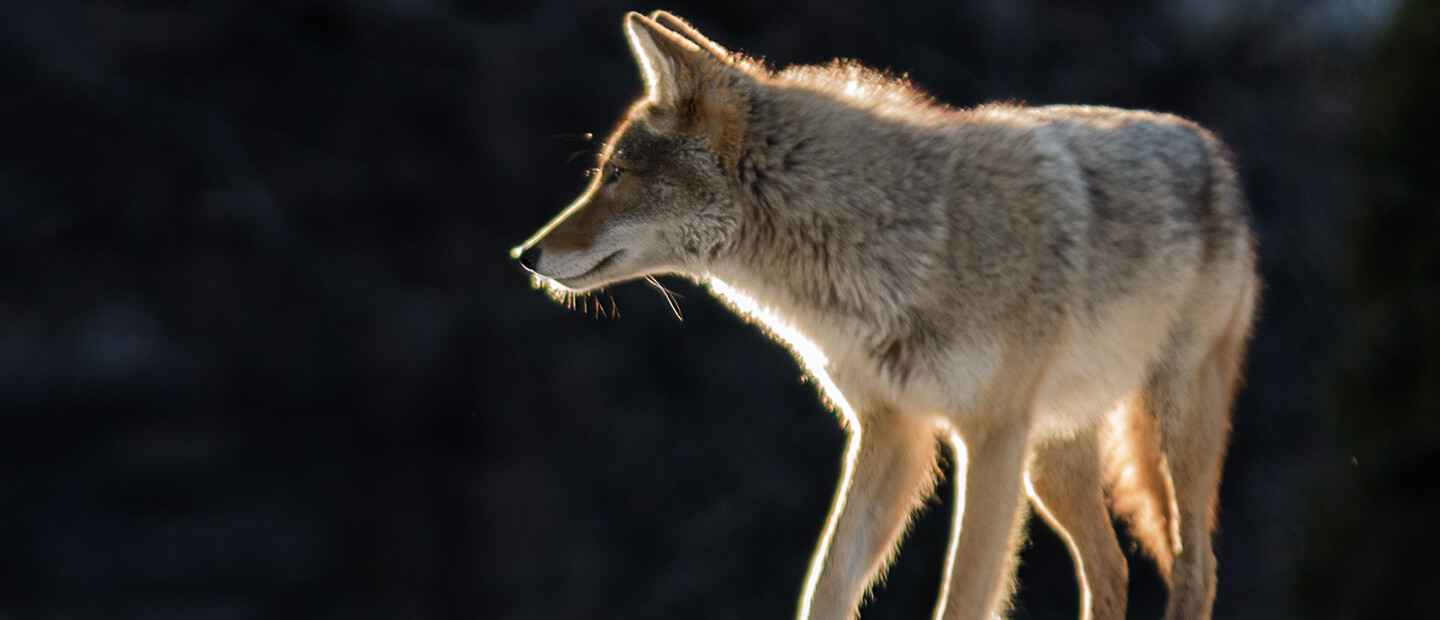
Where To See Wildlife On Your Bike In Ontario
I don’t know if I was awoken by the frigid September night, or by the ruckus of the critter, animal, or forest creature that had invaded my campsite. But awake I was—my senses on high alert. Something had shown up hungry, and it was close to my tent. Very close. Was this the night I'd be gobbled up by an unknown beast? Drat. Why did I not have a Crocodile-Dundee knife to fend off my nocturnal foe? Sleep? Impossible. I realized a profound truth: The visitors that forage around my tent at night are larger and scarier than their daytime counterparts. I lay as if a corpse, hoping I wouldn’t be dessert to the beast’s nighttime feast. Eventually, it retreated back into the forest, and morning came. The sun rose, and all was well with the world, at least, until I put my head down once again.
The daytime is for riding and exploring. It’s fun. I never know what I’ll find around the next corner: man or beast, logging truck or moose. Northern Ontario, Canada is a place of adventure, remote near-empty roads, hospitable people, nature, and wildlife. Lots of wildlife.
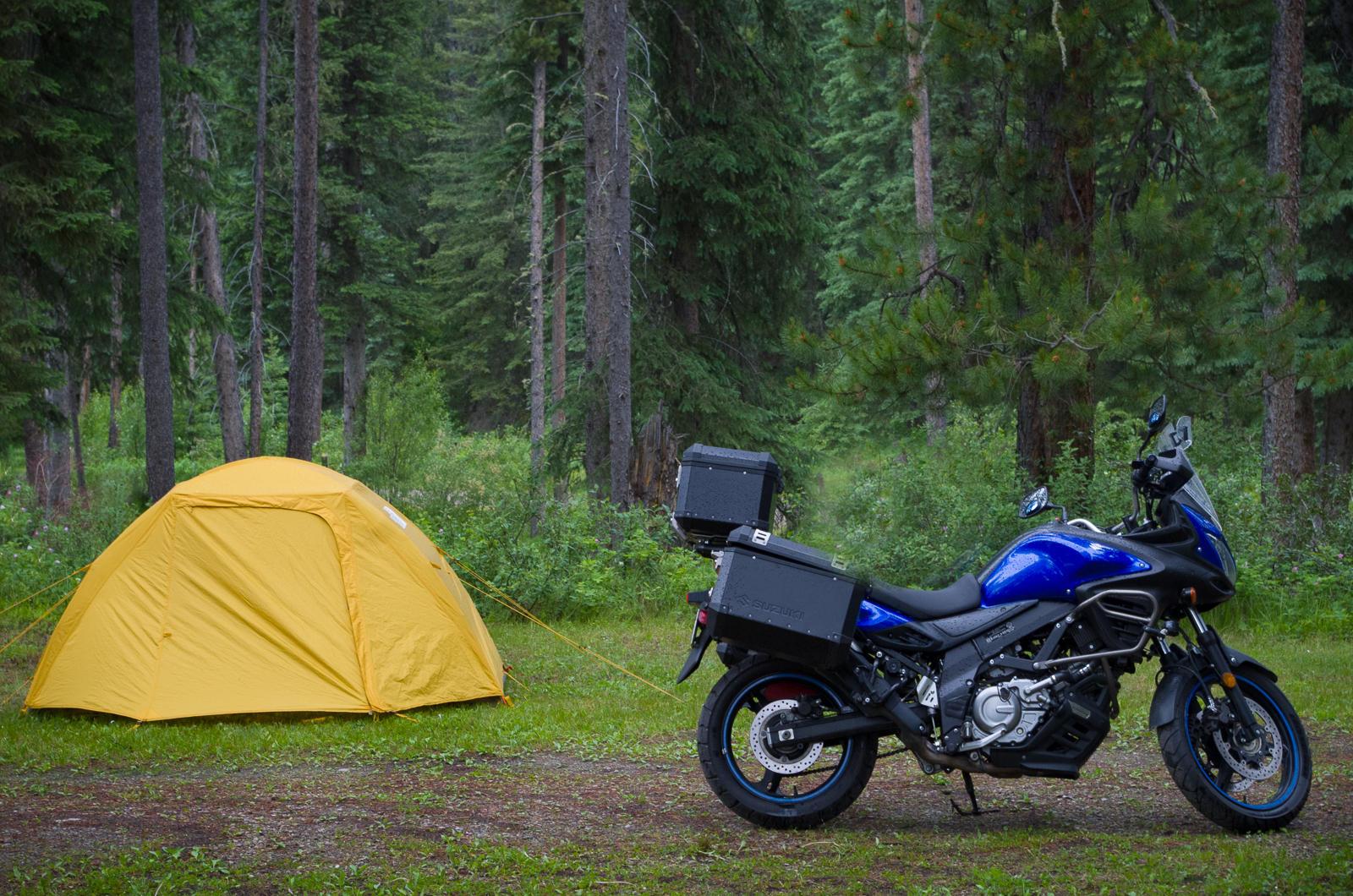
I was pretty sure I hadn’t gotten that lost
My interest in the north’s wildlife was piqued while riding from Victoria, British Columbia, to Toronto. Shortly after entering Ontario from Manitoba, I encountered a pod of American white pelicans. I had only ever seen pelicans once before, and that was in Florida. And I was pretty sure I hadn’t gotten that lost. But there they were, flying above the water, probably looking for fish to scoop up in their unmistakable bills. With a wingspan of just under nine feet (2.7 metres), twenty-five pelicans aloft is a sight to behold. And finding them in Northern Ontario was a surprising and unexpected delight. Who knew?
As a photographer, I like photographing wildlife, but I didn’t know much about the wildlife in the north. Sure, I knew about moose and bears, but what else was out there that I didn’t know about? And, where could I see it?
A 2-million-acre game preserve
One of the best places to see wildlife in Northern Ontario is the Chapleau Crown Game Preserve. With over two million acres of land, it is the largest Crown Game Preserve in the world. With a little bit of luck, you may see a bald eagle, loon, beaver, lynx, black bear, moose, red-tailed hawk, osprey, duck, red fox, fisher, river otter, wolverine, great blue heron, sandhill crane, wolf or an owl. Fantastic. But that’s not the best part. The Chapleau Crown Game Preserve is at the top of Highway 129, one of Northern Ontario’s best motorcycle roads. I go for the riding. The wildlife photography is the icing on the cake, which makes the location of the Game Preserve just about perfect. Adventure motorcycles are probably best since the roads in the Preserve are, for the most part, not paved. And, an added tip: be sure to visit Aubrey Falls on the way up.
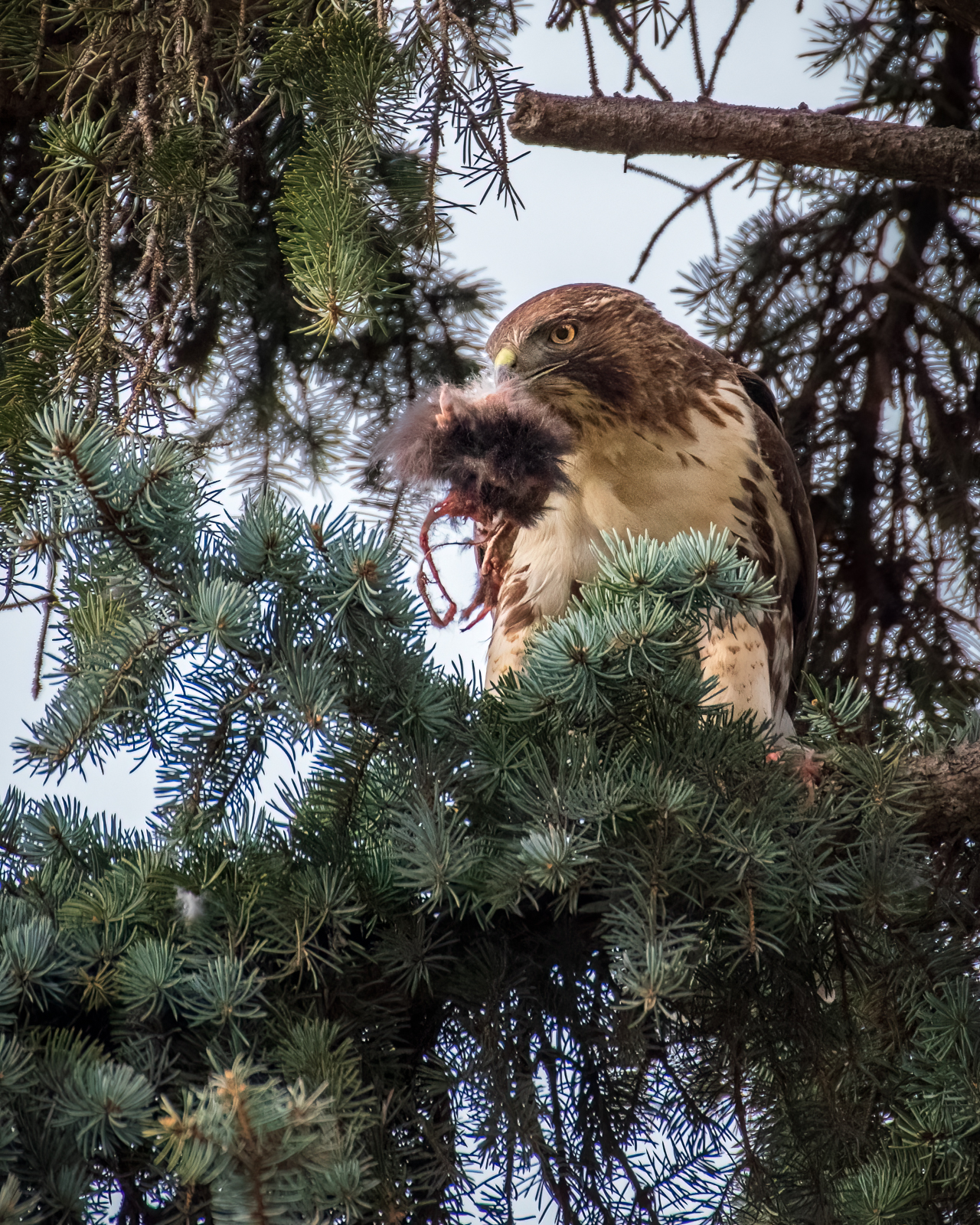
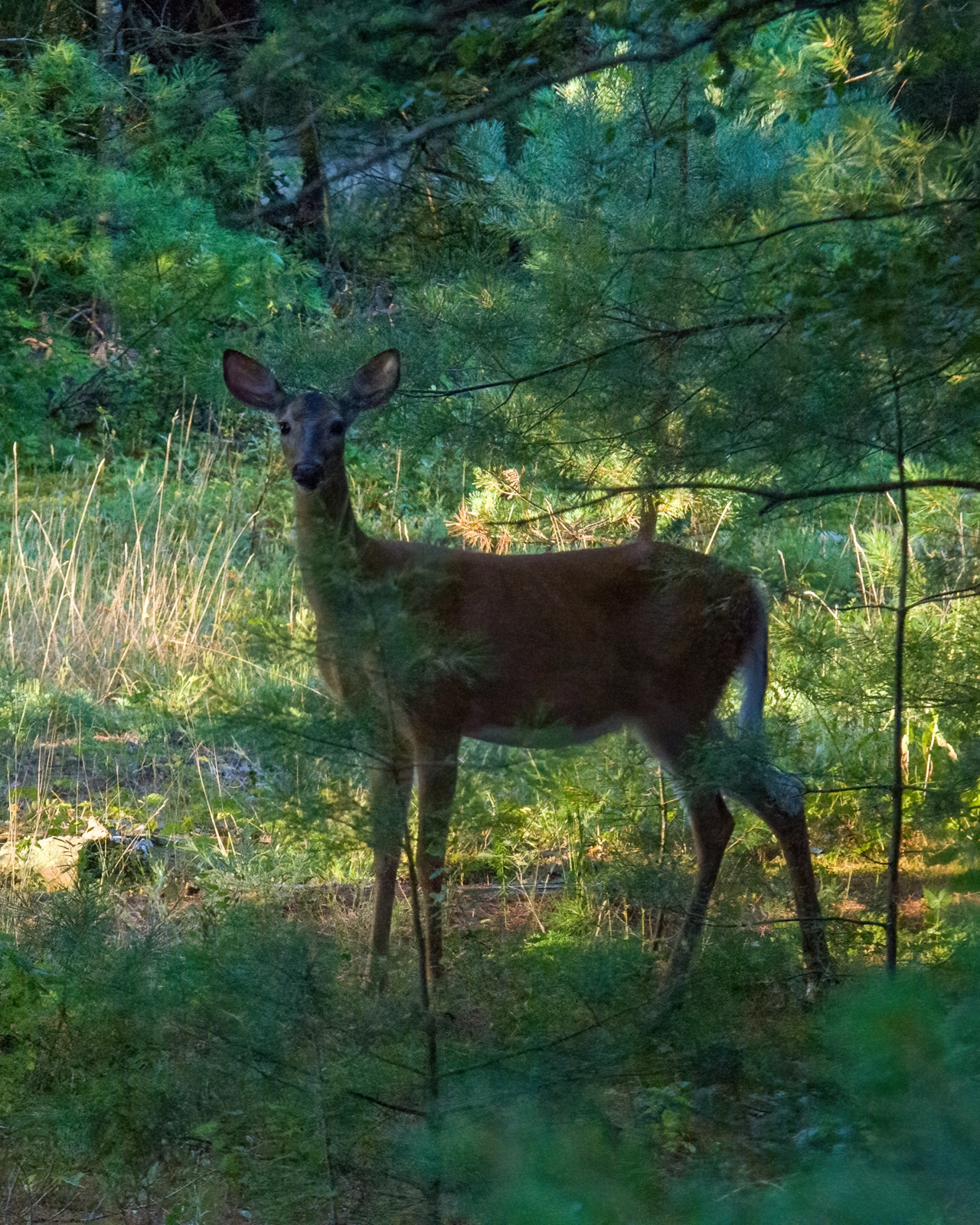
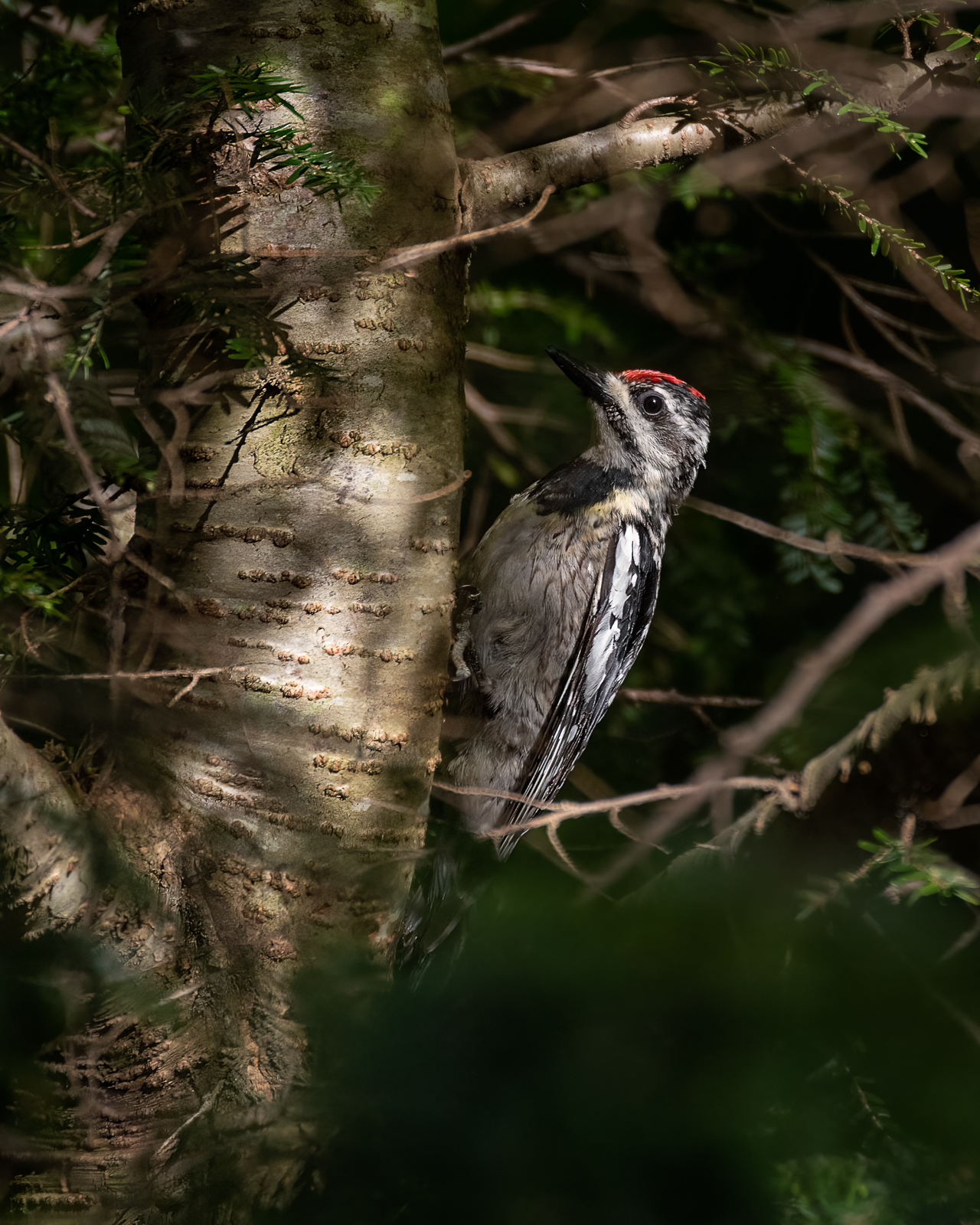
You don’t have to be in the game preserve to see wildlife (or be visited by some, I’ve found out more than once.) Although you probably won’t see a wolf, you may see a coywolf—usually called a coyote, even though they are a hybrid: part western coyote, part wolf, and about ten percent dog. Although wolves and coyotes are enemies now, there was a time when the wolf population was so low that they interbred with western coyotes. Not so any longer. Coyotes/coywolves get acclimatized to being around people, so keep a safe distance. My motto: Zoom in, don’t move in.
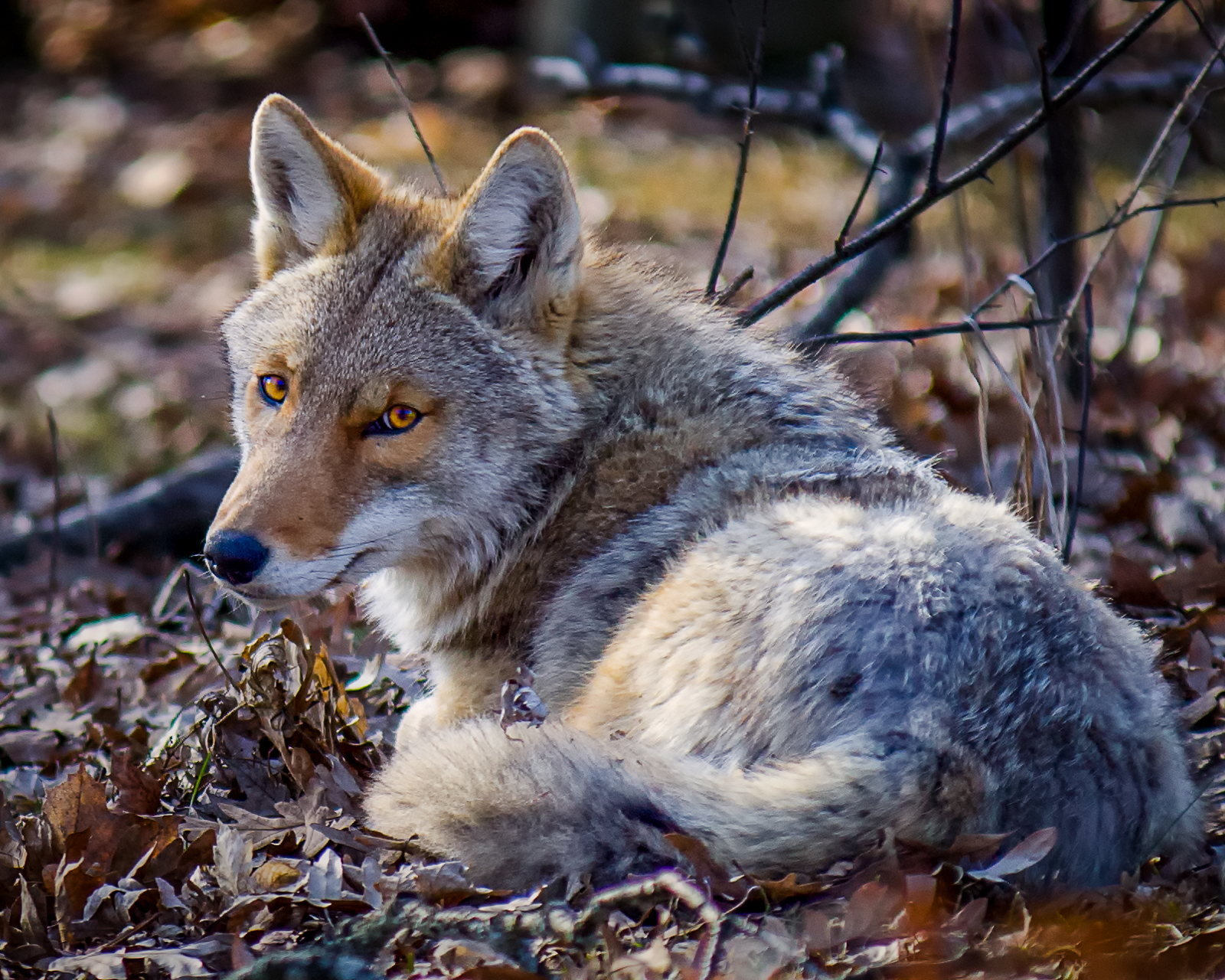
Teddy bears might be cuddly. Black bears not so much.
If you meet a bear in Northern Ontario, don't play dead. That's for grizzly bears. There are no grizzly bears in Northern Ontario, only black bears. Instead, keep the bear in sight as you slowly back away. If the bear doesn't leave or shows too much interest, throw objects, wave your arms, make loud noises, and yell until it does. If you're carrying food, drop it and leave it. According to ontario.ca, if a bear does attack, fight back with everything you have. Gee, thanks. Why don't I have a Crocodile Dundee knife again?
But there isn’t much to fear. There are 750,000 black bears in North America, about 105,000 of which, or about fourteen percent, are in Ontario. Annually, in North America, one person is killed by a black bear. That means, statistically, Ontario can expect one black-bear-caused death every 7.2 years or .012 per month. In 2023, Toronto had 71 murders or 5.9 murders per month. To me, this means that I am safer sleeping with the bears in Northern Ontario than I am staying home.
That doesn’t mean you shouldn’t be careful. When I enter a campground, I always ask the park staff if there have been bears in the area and if they have been posing any problems. I always take bear precautions when I am hiking and camping in Northern Ontario, but having some forewarning that they have been active in the area helps keep me diligent.
I started to wonder what kind of critters might have visited me that night
It could have been a bear, but I suspected it wasn't. It could have been a weasel, like a wolverine or a fisher, or it could have been a raccoon. They are all nocturnal. Or it could have even been a chipmunk, but it would have to have been a very large chipmunk. In the morning, the campsite was in good shape. My mysterious visitor had come, explored, and left without a trace. It would have been a different story if I had left food or garbage about. I had not. For this reason, I always bear-proof my site (it works for all animals), and I never feed wildlife. It trains them to come looking for food.
It could have been a wolverine. They are nocturnal creatures. Wolverines have sharp teeth, razor-sharp claws, and a solitary and unfriendly demeanour. They are the size of a medium dog. Bears, lynx, and wolves will all abandon their catch rather than tangle with a wolverine. If a bear won’t tangle with one, I don’t want to. If you see one, consider yourself lucky, but don't move in for a closer look, zoom in, don’t move in.
A fun fact. Wolverine came into comic-book lore in the 1970s when the editor-in-chief of Marvel Comics, Roy Thomas, asked writer Len Wein to devise a character called Wolverine, a man of small stature from northern Alberta with a wolverine's fierce temper. Wolverine is the first prominent comic book character who is Canadian. You might see a wolverine in Northern Ontario, although your odds are slim as they are nocturnal and shy away from people. You probably won't see Hugh Jackman, either. Just sayin’. They are another animal for which it is better to zoom in than move in when taking photos.
Or it could have been a fisher
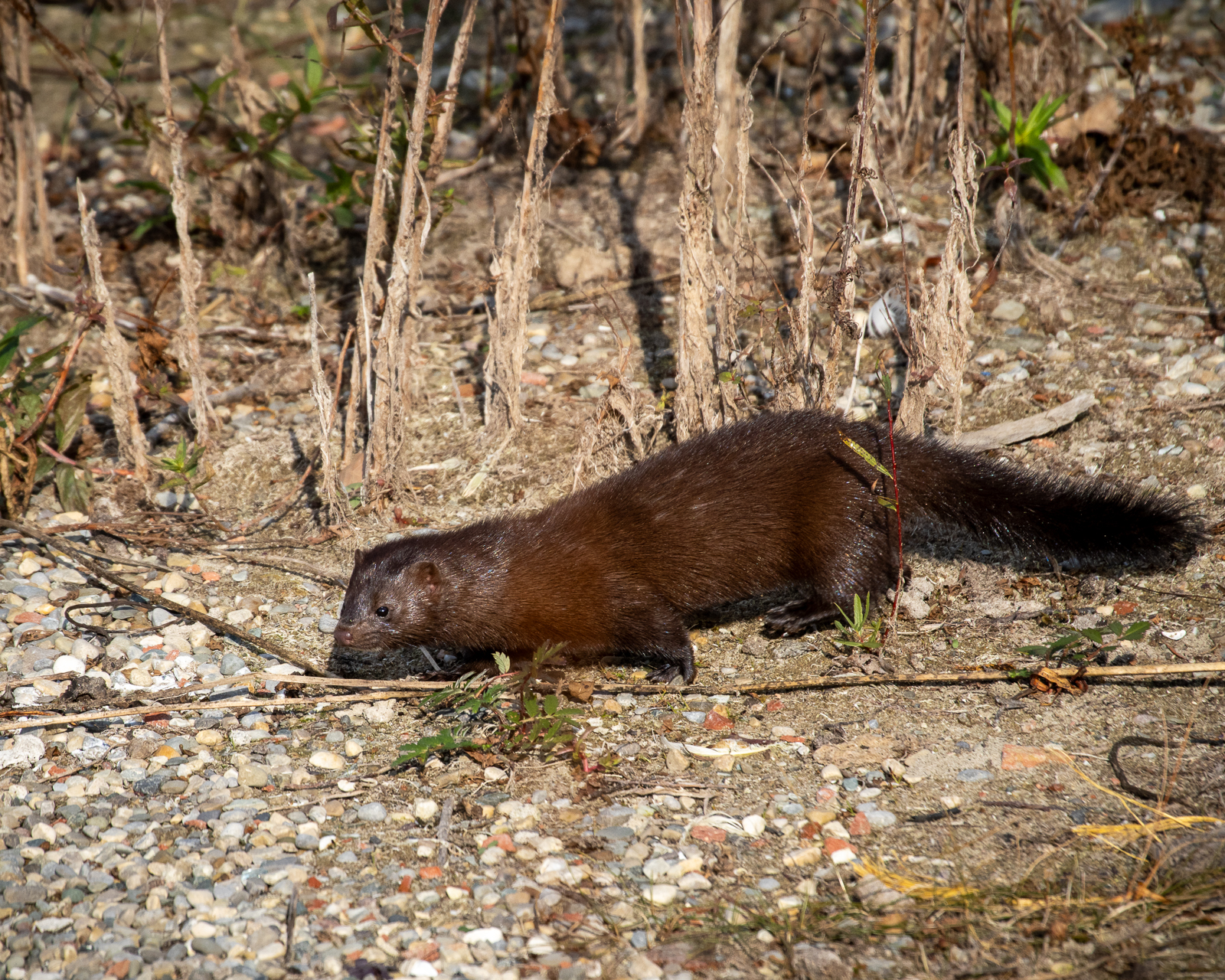
How big, fast, and fierce would an animal have to be to be the only predator of a porcupine and occasionally lunch on a lynx? It turns out not that big. The male fisher, also a weasel, tops out at about six kilograms (thirteen pounds), about half the size of a wolverine. A Canadian lynx tops out at about thirteen kilograms (30 pounds), so the fisher, like its much cooler-named cousin, the wolverine, is also a fierce hunter. Although rare, you might see one in a forest with a fifty percent canopy, which is their preference. Its name is derived from its original French name and not from what it eats. A fisher eats rabbits, rodents, birds, reptiles, amphibians, insects, eggs, fruit, nuts, berries, occasionally lynx, and sometimes fish when it's not pigging out on a porcupine.
I want to meet a moose
There are an estimated 91,000 moose in Ontario. I want to meet just one. That said, where and when makes all the difference. Across a lake, basking in golden light amid a dawn mist would be perfect—standing in the middle of the road on the other side of a blind corner, not so much. (Although that reminds me of some very sage riding advice: Always be able to stop in the distance you can see on your side of the road. Good to remember, or you might end up meeting a moose up close and personal.)
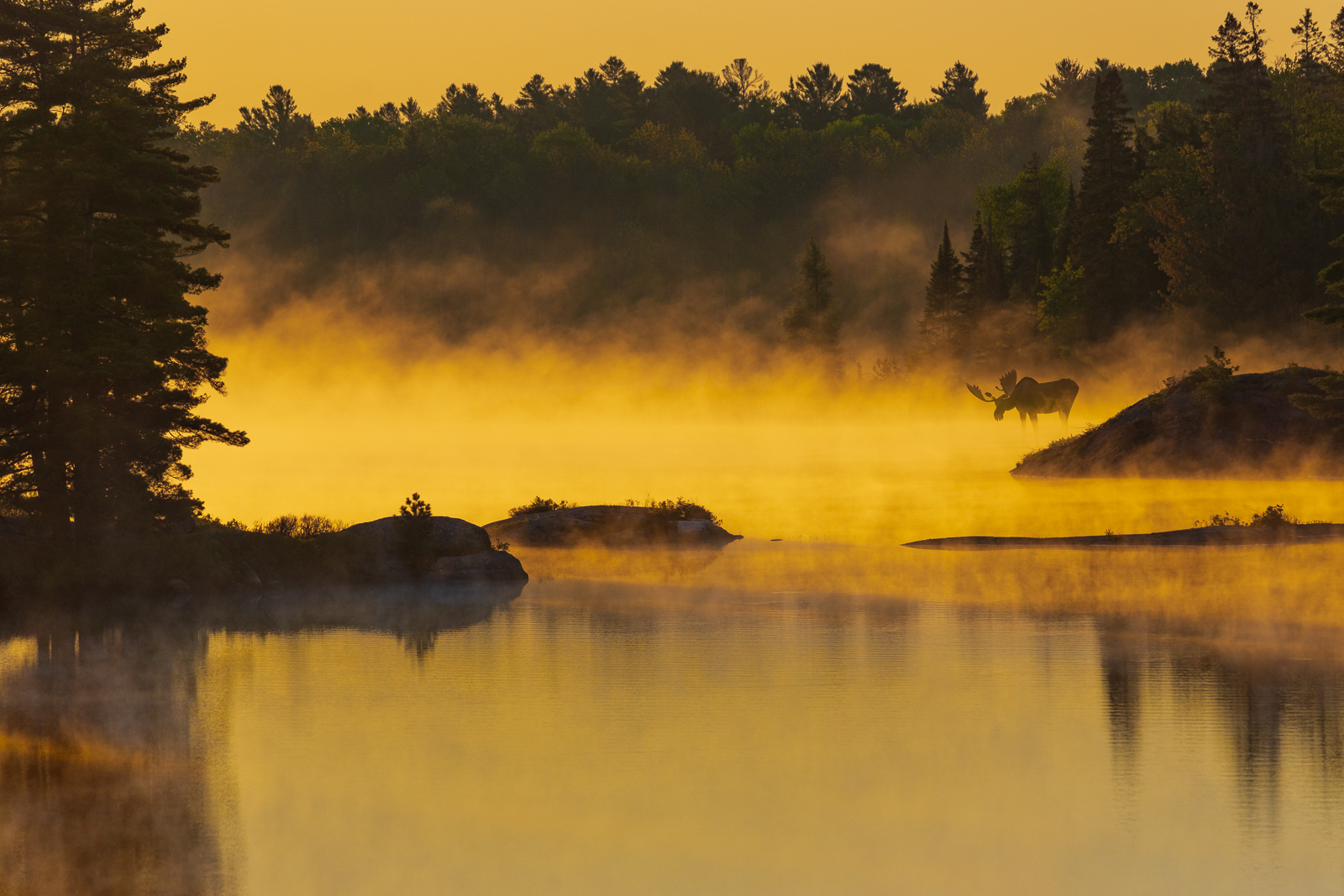
This ain’t no house cat
I’d also love to photograph a lynx or a bobcat. Unfortunately, they are elusive, and sightings are rare. It’d be cool to see either one in the wild, though. As long as it was at a distance, and I could take a photo without awakening its interest. They definitely fall into the category of zoom in, don’t move in. If you have a close encounter, back away and keep your eyes on the animal, but do not run because running incites their innate instinct to chase. Strangely, my innate instinct is to run.
Quintessentially Northern Ontario
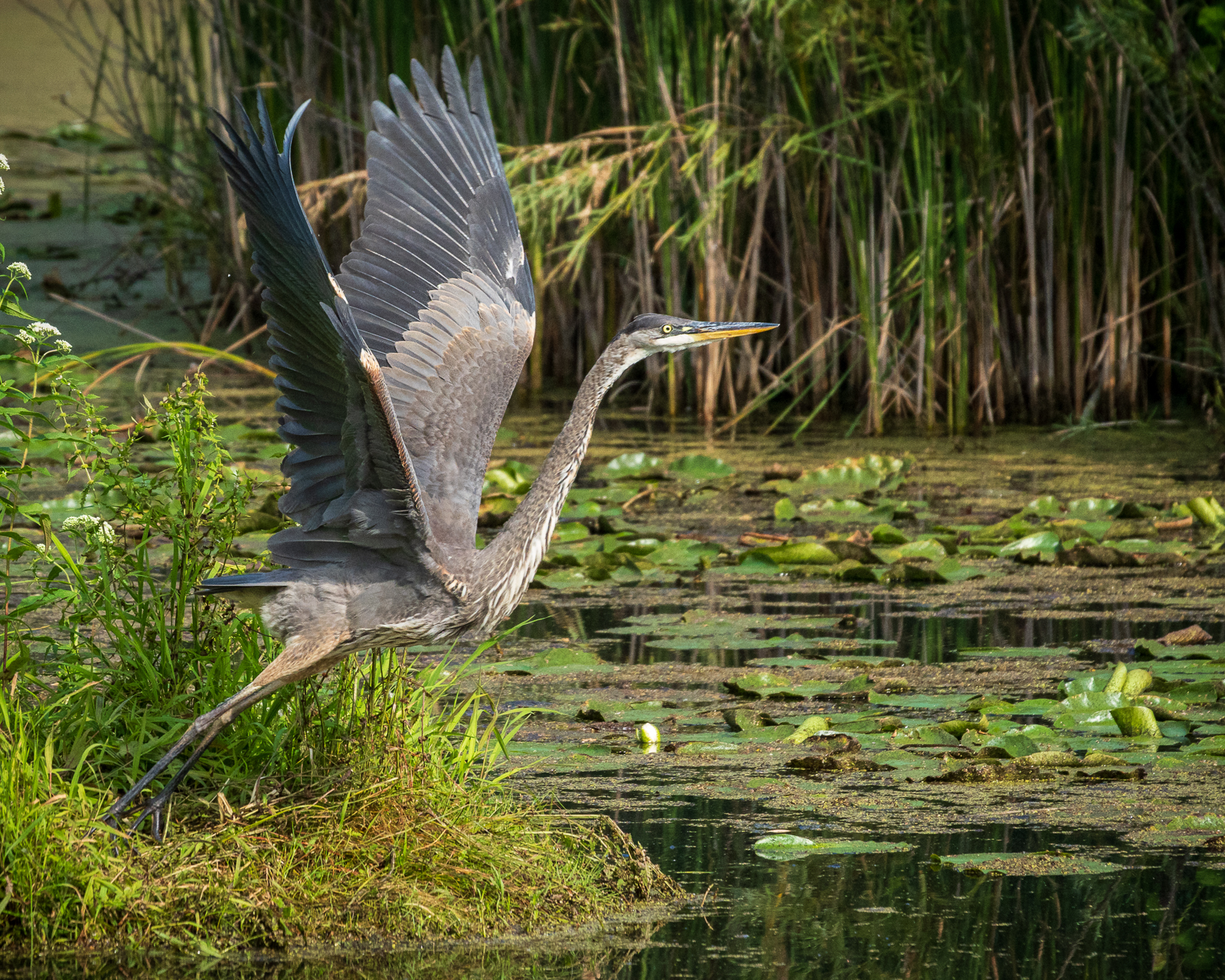
There are a lot of herons you might see in Northern Ontario, but according to the World Bird Database, for most of them, a sighting would be rare. On the other hand, you can count on seeing a great blue heron. With a wingspan of almost two metres (six feet), they are the largest heron in North America.
Occasionally, a great blue heron will choke itself to death by taking a fish too big to swallow. I guess they aren't the sharpest fishermen in the boat. But, they are beautiful to watch, and as they often sit still waiting for prey to happen by in the water, it can be easy to photograph them. They are also slow in flight, so they are an ideal subject for bird-in-flight photos.
From pelicans to coywolves, each creature adds a unique charm to my Northern Ontario riding adventure. I am happy to cross off one animal or bird at a time as I get to see and photograph them. For me, the scenery, nature, wildlife, and hospitality all go into making my trips to Northern Ontario a first-class adventure. I’m heading there again this season. I hope to see you there.
Recommended Articles

Bucket List Motorcycling in Ontario, Canada 2026

Ontario's Best Twisties: Five Roads to Get Your Lean On

The Big Belly Tour—A Complete List of Ontario's BBQ Joints

It's Bike Night in Ontario 2024

Ontario's Top Twisties

Have You Ridden Canada's OG Highway? Here's Why Every Rider Needs to Hit Up Historic Highway 2

23 Amazing Photos That Prove PD13 Is Still The Best Motorcycle Event Ever

Motorcycle Swap Meets in Ontario—The Complete List for 2025

And a Vespa shall lead them all...


